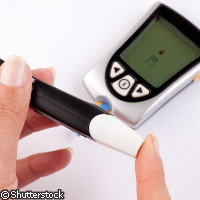Scientists shed light on insulin activity
A British-Czech team of scientists has discovered how insulin interacts with cells in the human body. Published in the journal Proceedings of the National Academy of Science (PNAS), the findings could give a major boost to researchers hoping to develop viable treatments to fight type I diabetes. People need insulin, a key protein hormone regulating blood sugar levels that impacts lipid and protein metabolism. Insulin is particularly important in the treatment of diabetes, a disorder that affects some 25 million people in Europe. Based on data from the International Diabetes Federation (IDF), the number of Europeans with diabetes will increase to 29 million in 2025. On the global front, the widespread lack of access to insulin and diabetes supplies in developing countries increases the risk of diabetes, especially in sub-Saharan Africa where many fall victim to the disease too fast, too soon. Until now, researchers' understanding of the structural behaviour of insulin has been based on inactive and multimeric states. This latest study sheds new light on how insulin is transitioned from an inactive state to an active one. The findings reveal how insulin binds to insulin receptors on cells. The scientists from the York Structural Biology Laboratory at the University of York in the UK, along with their colleagues from the Institute of Organic Chemistry and Biochemistry of the Academy of Sciences of the Czech Republic, developed and analysed a range of super-active insulins, and discovered the common features that are associated with the likely molecular structure of human insulin when it is active in the body. 'The structures of inactive forms of insulin and the insulin receptor are reasonably well known, but documenting how they interact has proven to be a considerable scientific challenge,' explained Dr Marek Brzozowski from the York Structural Biology Laboratory. 'Improving our understanding of this interaction holds the key to developing far more sophisticated treatments for type 1 diabetes and this research represents an important step forward.' The scientists said the results of their study could be used to develop insulin treatments that would not only be better controlled but that could be delivered to patients injection-free. The research study was supported by grants from the Czech Republic's Ministry of Education, Youth and Sports and the Grant Agency of the Academy of Sciences, and the UK's Biotechnology and Biological Sciences Research Council.
Countries
Czechia, United Kingdom



